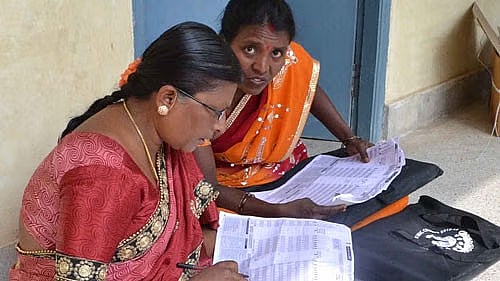
Post-Independence, this is the first time India would conduct a caste count, which was last held almost a century ago as part of the 1931 census.
Credit: DH photo
Thiruvananthapuram: The Centre's decision to go for a caste census could lead to a shake up in the job reservation structure in Kerala as the Muslim community and Hindu-Ezhava communities have been lamenting that they were not getting due representation in proportion to their populations and that the upper caste Hindu-Nairs were getting a higher proportion.
While the SNDP Yogam that represents the Hindu-Ezhava community and various Muslim and backward Christian communities in Kerala have been demanding caste census, the NSS that represents the Hindu-Nair community was opposing it.
NSS had also opposed the report of the Narendran commission appointed by the Kerala government in 2000 as it pointed out the inadequate representation of many backward communities in government service and education.
For these reasons, the decision of the BJP government at the Centre might not go down well with the Hindu - Nair community, which is the second largest Hindu community in Kerala.
SNDP Yogam general secretary Vellappally Natesan and his son and NDA Kerala leader Thushar Vellappally had welcomed the decision to conduct a caste census. Caste census will help in giving a clear picture about the representation of various communities in government jobs and help in addressing the disparities.
After the Bihar government released caste survey data in 2023 the CPM government in Kerala came under pressure to conduct a socio-economic caste census. The Indian Union Muslim League had also raised the demand in the Assembly. Various Muslim outfits had stated that a caste census was essential to clarify the general assumption that Muslim community was getting disproportionate representations.
Political observer J Prabhash told DH that the caste census would be opening a Pandora's box in Kerala. The BJP is unlikely to get any immediate gain or setbacks from the decision in Kerala.
At present, among the OBC communities the Hindu-Ezhava is getting the highest reservations of 14 percent followed by Muslims 12 percent and Latin Catholic four percent.
The general assumption is that the Muslim population has gone up while that of the Ezhava population came down over these years.
As per data furnished by the Kerala government in the assembly last year, Hindu-Ezhavas constituted the highest number of government employees in the state with 1.15 lakh, followed by upper caste Hindu communities like Nair with 1.08 lakhs. The number of Muslims was 73,774, forward Christians 73,713 and Latin Catholics 22,542.